IN00185 Miregaon Charter of Prabhavatigupta

The set of five copper plates were found when a field was being dug near the village of Mirēgaon. The inscription records the donation of the village Jalapura-vāṭaka to support a group of Brāhmaṇas by Prabhāvatī Guptā in the 20th year of the reign of her son, Pravarasena II. The contents of the plates are the same as the Ṛiddhapur plates except for the details of donations. The plate was drafted by a minister named Candra.
IN00184 Masod Charter of Pravarasena II, Year 19

This charter, issued in the 19th year of Pravarasena II’s reign, records the donation of a piece of land in the north west of Matsakadraha village in honour of 19 Brāhmaṇas who are named in the inscription.
IN00183 Mandhal Charter of Pravarasena II, Year 17
This set of five copper plates were discovered during archaeological excavations undertaken at Māṇḍhaḷ by the Department of Ancient Indian History, Culture and Archaeology, Nagpur University. These plates were discovered with two other later Vākāṭaka copper plate charters. Each charter was complete with ring and seal attached. This charter was issued from Pravarapura and it records the donation of the village Mayasagrāma in favour of Upādhyāya Māṭrisvāmin by Pravarasena II. The charter dates to the 16th and 17th year of Pravarasena II reign, with the first date recording the year when the donation was made and the second year recording when the charter was written and issued. According to the inscription one third of the religious merit of the donation is to go to Ājnākabhaṭṭārikā, mother of Narendrarāja, although it is not known who these two people are. According to Shastri, the identification of Mayasagrāma is not possible at present, but it is also not possible to rule out Māṇḍhaḷ as the possible location of the ancient village.
IN00182 Mandhal Charter of Rudrasena II, Year 5
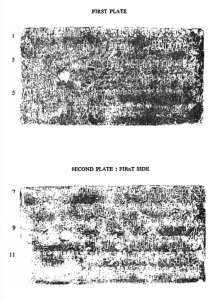
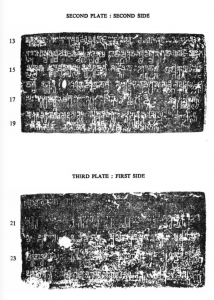
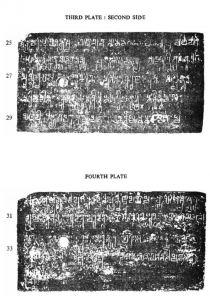
This set of four copper plates was discovered during the ploughing of a field in the village of Māṇḍhaḷ in 1982. The plates date to the 5th year of Rudrasena II’s reign and record the donation of four villages, Selludraha, Achchhabhallikā, Suragrāmakā and Aragrāmakā, which were used as a Brāhmaṇa settlement, occupied by Brāhmaṇa’s from different sects. The charter was written by Senāpati Vibhīshaṇa for Rudrasena II, and is stated to have been issued by the king himself following a command from Viṣṇu. Records so far do not specify in which field the copper plates were discovered.
IN00181 Ajanta Cave 4 Image Inscription
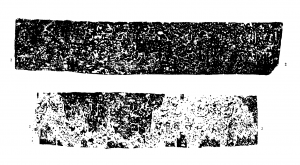
IN00180 Ajanta Cave 17 Inscription of Ravisamba
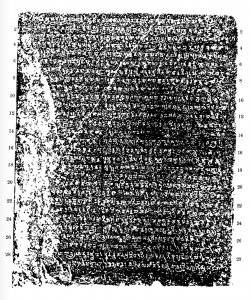
This stone inscription, inscribed on the side wall of the outside veranda of cave 17, is much damaged by exposure, which according to Shastri (1997: 46), has lead the correct decipherment of the inscription to be very problematic. The inscription starts with a dedication to the Buddha, unusual as many of the Vākāṭaka period inscriptions and charters are dedicated to Hindu gods. The inscription was carved to record the creation of Buddhist stupas and institutions by a ruler called Dharādhipa and with the wish for the longevity of these structures. The inscription was carved under the name of Ravisāmba, a vassal of the Vākāṭaka king Hariṣeṇa. The inscription also includes a genealogy for Dharādhipa and Ravisāmba.
IN00179 Ghatotkaca Cave Inscription of Varahadeva
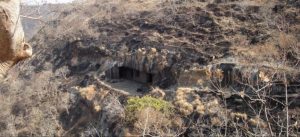
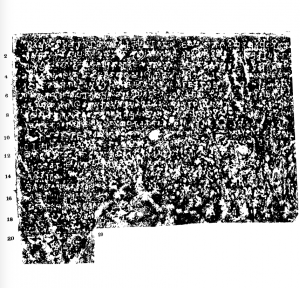
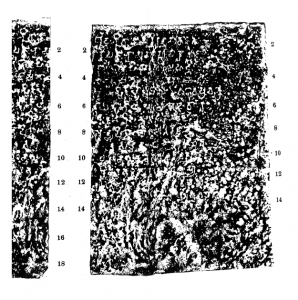
This stone inscription is carved onto the back wall of the veranda of the Ghaṭokaca cave at Gulwāḍā, which is a Buddhist site. The inscription, like those found at Ajaṇṭā, has been damaged by the weather, originally being 22 lines long, but now the last four lines are almost completely worn away. According to Shastri (1997: 44-45), the inscription was incised to record the excavation of the cave in which it is recorded and its donation to a Buddhist saṅgha, although the damage to the inscription over time has led to the details of the donation remaining unknown. The beginning of the inscription includes praise of the Buddha and a family history of Varāhadevā, a minister of the Vākāṭaka king, Hariṣeṇa.
IN00178 Ajanta Cave 16 Inscription of Varahadeva
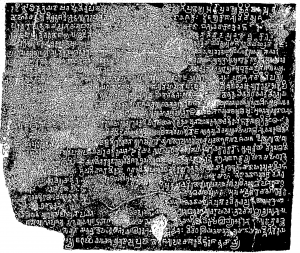
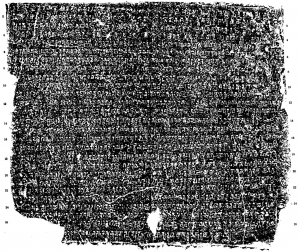
This stone inscription, in cave 16 at Ajaṇṭā, was first published in 1862 by Dr. Bhau Daji. As with the other stone inscription in cave 17 at Ajaṇṭā, this inscription has been damaged by exposure to weather. The inscription was written for Varāhadeva, a minister of the Vākāṭaka king, Hariṣeṇa. The inscription records the excavation and decoration of a cave dwelling, which both Mirashi (1963: 104) and Shastri (1997: 42) believe refers to the creation of cave 16 itself, where the inscription is found at Ajaṇṭā. The donation was made to an order of Buddhist monks.
IN00177 India Office Charter Fragment of Devasena

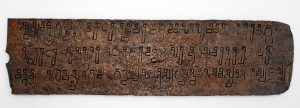
According to the single plate of this charter, it was issued at Vatsagulma and starts immediately by citing Devasena’s order of the grant. The inscription records the donation of a village (unidentified) to two Brāhmaṇas Dharmasvāmin and Bhavasvāmin of the Śāṇḍilya gotra. According to Shastri 1997: 40-41, the exact location of the donated land is not known but may possibly be in the Akolā district.
IN00176 Washim Charter of Vindhyasakti II
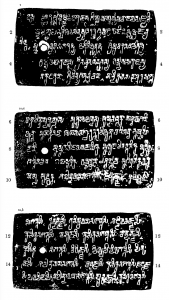
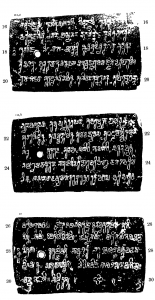
This charter records the donation of the village Ākāsapadda to fourteen Brāhmaṇas by Vindhyaśakti II. The charter records the names of the Brāmaṇas and the share of the village which they were given. According to Shastri 1997: 39, the charter is important in that it proves that Pravarasena I, who ruled as part of the undivided family, had at least four sons who all became kings, which until the discovery of this charter had not been satisfactorily proven.